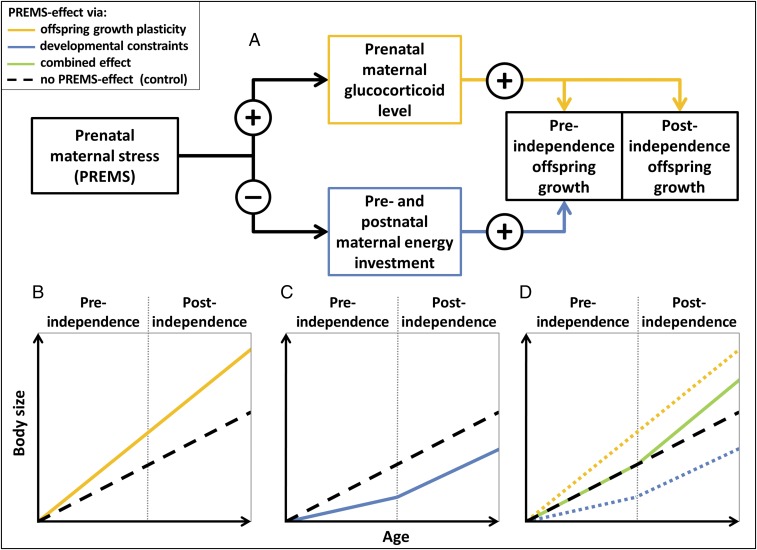Fig. 1.
Schematic illustration of the integrated hypothesis predicting PREMS effects on offspring growth resulting from the opposing effects of reduced maternal investment and adaptive growth plasticity. (A) PREMS negatively impacts maternal physical condition resulting in reduced maternal investment and increased glucocorticoid levels. (B) Elevated prenatal glucocorticoid levels increase offspring growth rate throughout development, whereas (C) reduced maternal investment results in developmental constraints on preindependence offspring growth. (D) If both processes coincide, effects may cancel each other out during preindependence, resulting in a realized growth rate that is not different from an unaltered growth rate. Importantly, postindependence growth rate is not affected by maternal investment and therefore reflects adaptive growth plasticity only with increased growth rates compared with controls.

